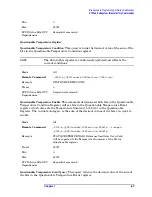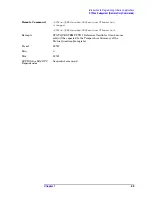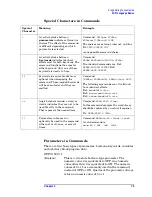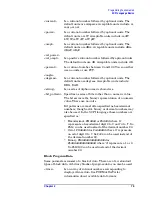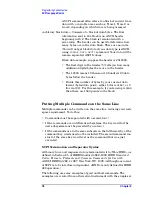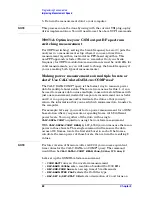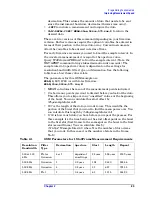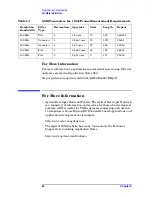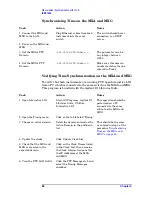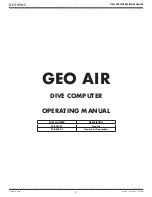
Chapter 2
75
Programming Fundamentals
SCPI Language Basics
<current>
Is a rational number followed by optional units. The
default units are Amperes. Acceptable units include: A,
mA,
μ
A, nA.
<power>
Is a rational number followed by optional units. The
default units are W. Acceptable units include: mAW,
kW, W, mW,
μ
W, nW, pW.
<ampl>
Is a rational number followed by optional units. The
default units are dBm. Acceptable units include: dBm,
dBmV, dB
μ
V.
<rel_power>
<rel_ampl>
Is a positive rational number followed by optional units.
The default units are dB. Acceptable units include: dB.
<percent>
Is a rational number between 0 and 100. You can either
use no units or use PCT.
<angle>
<degrees>
Is a rational number followed by optional units. The
default units are degrees. Acceptable units include:
DEG, RAD.
<string>
Is a series of alpha numeric characters.
<bit_pattern> Specifies a series of bits rather than a numeric value.
The bit series is the binary representation of a numeric
value. There are no units.
Bit patterns are most often specified as hexadecimal
numbers, though octal, binary or decimal numbers may
also be used. In the SCPI language these numbers are
specified as:
• Hexadecimal, #Hdddd or #hdddd where ‘d’
represents a hexadecimal digit 0 to 9 and ‘a’ to ‘f ’. So
#h14 can be used instead of the decimal number 20.
• Octal, #Odddddd or #odddddd where ‘d’ represents
an octal digit 0 to 7. So #o24 can be used instead of
the decimal number 20.
• Binary, #Bdddddddddddddddd or
#bdddddddddddddddd where ‘d’ represents a 1 or 0.
So #b10100 can be used instead of the decimal
number 20.
Block Program Data
Some parameters consist of a block of data. There are a few standard
types of block data. Arbitrary blocks of program data can also be used.
<trace>
Is an array of rational numbers corresponding to
displayed trace data. See FORMat:DATA for
information about available data formats.







